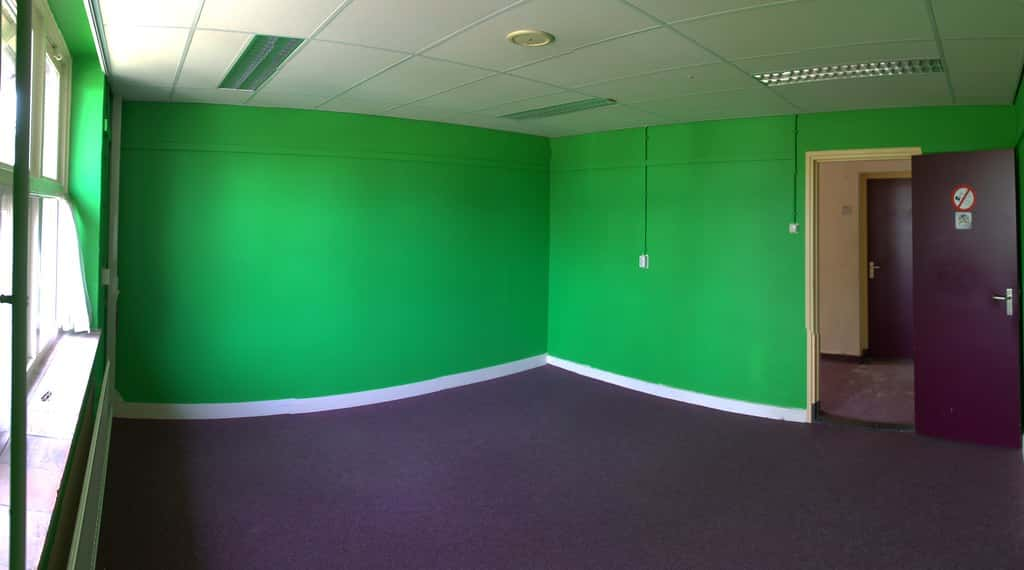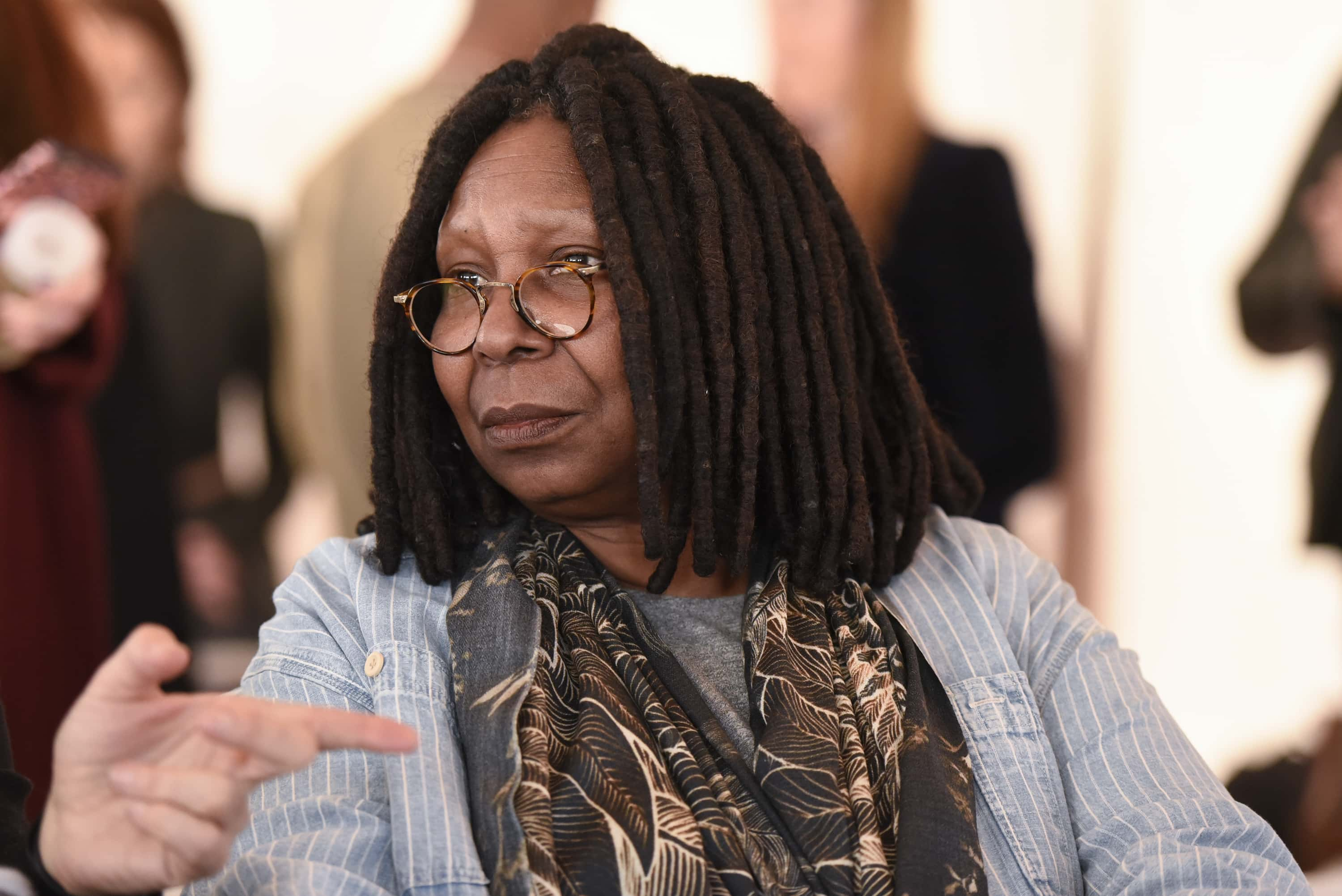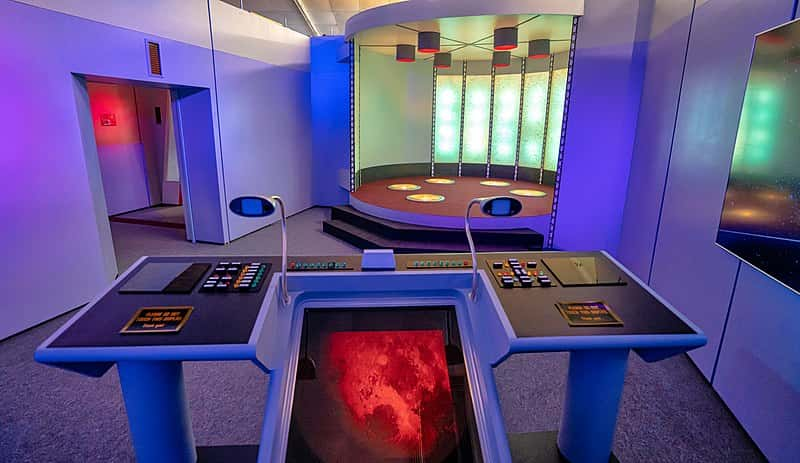"Star Trek was an attempt to say humanity will reach maturity and wisdom on the day that it begins not just to tolerate but take a special delight in differences in ideas and differences in lifeforms.”—Gene Roddenberry
Star Trek is an iconic Science Fiction television and film franchise created by Gene Roddenberry. The first series, known simply as Star Trek debuted in 1966, and followed the interstellar adventures of Captain James T. Kirk and the crew serving aboard the starship Enterprise. Since then, it has spawned several movies, TV spinoffs, games, toys, and comics—and, most recently, a new TV series, Star Trek: Discovery. Below are 44 bold facts about this iconic cult phenomenon.
Star Trek Facts
44. What Might Have Been
The original pilot episode of Star Trek featured an entirely different set of characters. The episode, titled “The Cage,” featured Jeffrey Hunter as Captain Pike. In a highly unusual move, the network ordered a second pilot called “Where No Man Has Gone Before,” which featured William Shatner as Captain Kirk.
 Star Trek: The Motion Picture, Paramount Pictures
Star Trek: The Motion Picture, Paramount Pictures
43. One of Seven
Marina Sirtis portrayed Counselor Deanna Troi on Star Trek: The Next Generation, Voyager, and Enterprise. She is one of only seven actors to play the same character on three different Star Trek series, and the only woman.
42. Recycled Material
Several episodes into the original show’s first season, the two-part episode called “The Menagerie” used a great deal of the material from the original pilot. The episode was a cost-effective way of reusing the old material while still allowing them to craft a new storyline.
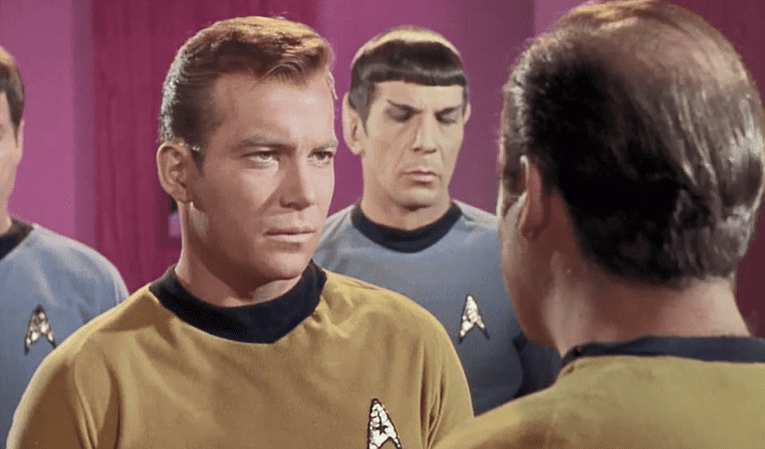 Star Trek: The Original Series, NBC
Star Trek: The Original Series, NBC
41. Female Number One
In the original pilot, Majel Barrett, who at the time was Gene Roddenberry’s girlfriend (she later became his wife) played first officer Number One. The reason for her replacement was twofold. Firstly, the producers didn’t want to give a woman a leading role simply because she was the producer’s girlfriend, and secondly, test audiences didn’t like her character. Her role was later modified to Nurse Chapel.
40. Maybe Someday
When Stephen Hawking guest starred on an episode of Star Trek, he reportedly stopped at the warp core set piece and said, “I’m working on that.”
39. Transcending Stereotypes
When Geneviève Bujold decided to leave Star Trek: Voyager, veteran actress Kate Mulgrew took over the role of Captain Kathryn Janeway. She said that her favorite thing about being on the show was the "privilege and challenge" of being able to take on the role of the first female captain, and being able to transcend stereotypes in front of millions of viewers.
38. First Lady of Star Trek
Majel Barrett Roddenberry had roles in every Star Trek series until her death, earning her the title “First Lady of Star Trek.”
37. Star Trek Scholarship
Founded in 1974, Starfleet International (SFI), one of the world’s largest trekker societies, has been offering yearly college scholarships since 1990. The organization offers five separate scholarships in different disciplines for students enrolled in higher education programs. The only requirement is that they have been members of SFI for at least a year before applying, and winners are granted $1,000.
36. Almost Starring Matt Damon
In the early days of casting for the Star Trek movie reboot in 2009, J.J. Abrams considered Matt Damon for the part of Captain Kirk. Damon didn't end up taking the role, and Abrams later stated that casting unknowns ended up being a better move.
 The Bourne Ultimatum, Universal Pictures
The Bourne Ultimatum, Universal Pictures
35. Most Widely Spoken Fictional Language
Klingon holds the record for the most widely spoken fictional language. Linguist Mark Okrand developed Klingon into a full-fledged language, and the tongue is spoken at many Star Trek fan conventions; you can even use it in the Google search engine, and works of literature like Hamlet have been translated into Klingon.
34. Big Buzz!
The trailer for the 2009 Star Trek reboot broke a record for the most downloads in 24 hours of any movie. Fans downloaded the preview from apple.com more than 1.8 million times in less than a day. Over a period of five days, the clip reached 5 million downloads, becoming the site's most popular download ever.
33. A Game for All Devices
Since 1971, there have been more than 125 video games that have come out of the Star Trek series. The first was a text game written in BASIC, an old programming language.
32. Enterprise on Display
Star Trek fans who want to see the Enterprise up close are in luck; the 11 foot studio model of the ship is on display at the National Air and Space Museum of the Smithsonian Institution in Washington, D.C.
31. Origins of a Gesture
The famous split-fingered Vulcan salute is borrowed from something Leonard Nimoy remembered seeing at an Orthodox Synagogue as a child. The gesture mimics the Hebrew letter “Shin,” which represents the word “Shaddai,” a name for God.
30. Virtual Reality
In the new series, the Discovery shuttle bay is actually one big empty green room, and the set is completely virtual.
29. A Little Whoopi
Whoopi Goldberg is a Star Trek super-fan, and when she heard that Gene Roddenberry was casting for the Star Trek: The Next Generation, she asked be a part of it. The original series was an inspiration to her. As she said, "When I was a little girl, it was like, 'Oh, we are in the future.' Uhura did that for me. So I want to be on your show." Her plea was successful, and she became Guinan the bartender.
28. Star Peace
Fans of Star Trek and Star Wars enjoy arguing over which space franchise is more superior, but in 2011, actor George Takei (Sulu) called for what he called “Star Peace,” asking fans of both series to unite against Twilight, which he said was an “ominous threat to all science fiction.”
27. The Never Uttered Catchphrase
“Beam Me Up Scotty” is an oft repeated catchphrase in popular culture today, but the phrase was never actually spoken in either the shows or the movies. The closest version was in one of the films, and went “Scotty, beam me up.” It’s believed that the phrase was borrowed from a famous Star Trek bumper sticker that read “Beam me up, Scotty, there's no intelligent life on this planet.” The phrase finally made an appearance on film when it was used in the 2009 reboot.
 Star Trek: The Original Series, NBC
Star Trek: The Original Series, NBC
26. Variations on a Theme
Another famous catchphrase from the series was Dr. Bone’s frequent gripe “I’m a Doctor, not a …,” which he repeated with variation whenever he was asked to do something outside of his medical comfort zone. Interestingly, the idea didn’t originate with Star Trek. It was borrowed from a 1933 movie called The Kennel Murder Case, in which the character Doctor Doremus would say “I’m a doctor, not a magician” and other similar quips. Over time, Bones made the gag his own, and now it’s primarily associated with Star Trek.
 Star Trek: The Original Series, NBC
Star Trek: The Original Series, NBC
25. Glue Might Work
During the filming of the 2009 Star Trek movie, Zachary Quinto (who played Spock) was having difficulty holding his fingers together for the Vulcan salute. Eventually, director JJ Abrams had to glue his fingers together in order for him to do it properly.
24. A Creative Solution
The transporters that are used to "beam" people on and off the ship were developed as a means of getting characters on or off a planet quickly without having to land the ship or use shuttles, both of which were outside of the show’s production budget. Roddenberry later said that the invention of the transporter was "highly fortunate" because it actually improved on what they had originally planned to do.
23. Pinch, Don’t Punch
Another one of Nimoy’s ideas was the Vulcan nerve pinch, a move that knocked an opponent unconscious by a mere touch of the fingers to their neck. The original episode script had Nimoy's Spock knocking Kirk out with a punch, but Nimoy felt that punching would be undignified for Spock, and came up with the pinch instead.
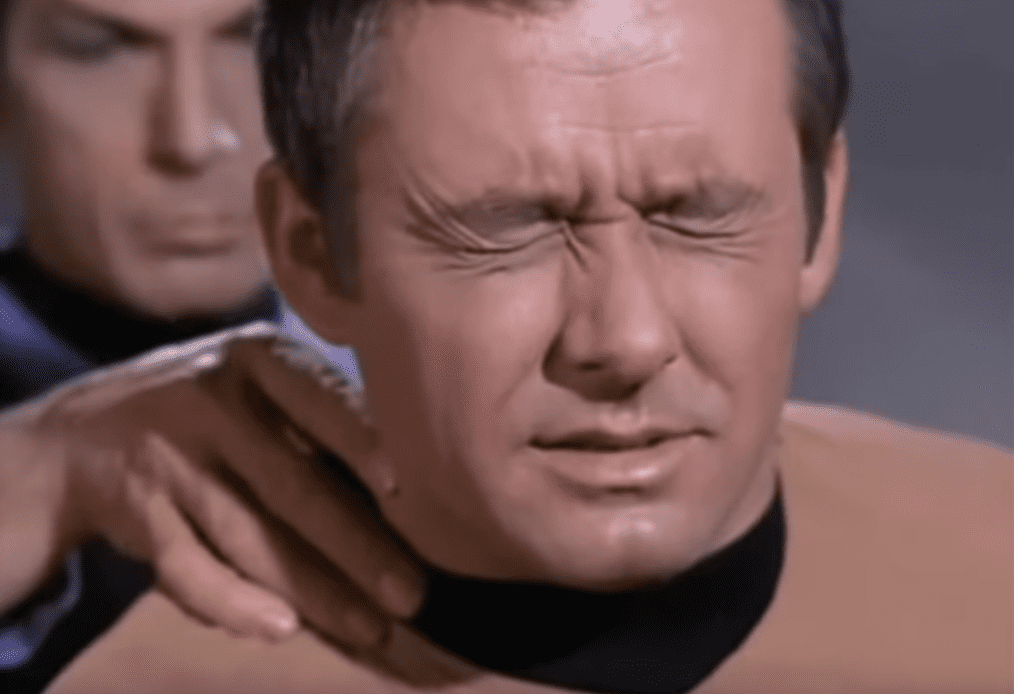 Star Trek: The Original Series, NBC
Star Trek: The Original Series, NBC
22. Signalling the Afterlife
The Klingon death howl used in Star Trek: Discovery tells the afterlife to expect a Klingon warrior. Prior to their leader T’Kuvma bringing back the ancient teachings, Klingons did not view the bodies of the dead with any particular interest.
21. The Picard Maneuver
The uniforms worn by the cast of Star Trek: The Next Generation were very uncomfortable, leading to a design change from a one piece to a two piece in season 3. Though they were more comfortable to wear, the jackets had a tendency to ride up when the actors were seated. Patrick Stewart, who played Captain Picard on the show, started straightening his jacket with a tug when he stood up. The action became known as the “Picard Maneuver” among the cast and crew.
 Star Trek: The Next Generation,Paramount Domestic Television
Star Trek: The Next Generation,Paramount Domestic Television
20. Some Unknown British Guy
When casting for TNG was first announced, some media described Patrick Stewart as an "unknown British Shakespearean actor." As a gag, Brent Spiner (Data) made up a sign, which he hung above the door to Stewart’s dressing room, reading, “Beware: Unknown British Shakespearean Actor.”
 Star Trek: The Next Generation,Paramount Domestic Television
Star Trek: The Next Generation,Paramount Domestic Television
19. “Shut Up Wesley”
Wil Wheaton (of Stand by Me fame) played Wesley Crusher on TNG. The line “Shut Up Wesley,” which was only used in one episode, came to be used as a catchphrase by the (many) critics of the character.
 Star Trek: The Next Generation,Paramount Domestic Television
Star Trek: The Next Generation,Paramount Domestic Television
18. Length of Three Football Fields
The Enterprise in the original series measures 953.7 feet long; more than the length of three football fields. Enterprise-D in TNG is more than twice that length, and measures 2,103 feet. That’s the size of the entire Paramount Studio lot in Hollywood.
17. Getting an Upgrade
When the original series was being prepared for its HD debut in 2006, Paramount upgraded all of the flying sequences and space background shots. While some fans thought it was paramount to sacrilege, Michael Okuda, who had been involved with the franchise since the 5th movie, made sure that the new CGI sequences worked well with old footage.
 Star Trek: The Original Series, NBC
Star Trek: The Original Series, NBC
16. Audition Ad-lib
When Robert Picardo auditioned for the role of the holographic Doctor on Star Trek: Voyager, he was asked to say the line, “Somebody forgot to turn off my program.” He did, but then ad-libbed a line that ended up getting him the part, saying “I’m a doctor, not a light bulb.”
15. Desexualizing Star Trek
Mulgrew (Captain Janeway) disapproved of the highly sexualized character Seven of Nine, and Jeri Ryan, who played Seven, has said that in the early years she used to feel anxious whenever she had to do a scene with Mulgrew. Mulgrew later admitted in interviews that she wanted to desexualize Star Trek and her own character, and deliberately resisted having Janeway engage in a relationship with a male crew member.
 Star Trek: Voyager, United Paramount Network
Star Trek: Voyager, United Paramount Network
14. First of Their Species
The Star Trek series will often feature at least one character who is the first of their species to serve in Starfleet. Doug Jones, who plays Saru on the new series Discovery, is the first Kelpien to enter Starfleet. Producers have compared his character to Spock and Data from previous series.
13. Red-Shirting
"Red-shirting" became a joke among Star Trek fans to describe the extra who was going to be killed off in an episode (the extras generally wore red uniforms). In a tribute to the original series, Chief Engineer Olsen in the 2009 Star Trek is wearing a red shirt when he dies.
 Star Trek: The Original Series, NBC
Star Trek: The Original Series, NBC
12. The Pets of Star Trek
It can get quite lonely in space, but thankfully many of the Star Trek characters had pets. Some of the most famous pets included Reginald Barclay’s cat Neelix, Chief O’Brien’s tarantula Christina, Scotty’s tribble, and Picard’s fish named Livingston. On TNG, Data’s cat Spot was particularly important because he helped Data in his quest to be more human.
11. Does She Have a First Name?
Before the 2009 movie, Lt. Uhura had never been given a first name on screen—her first name is Nyota.
10. Time to Unpack That Suitcase
Patrick Stewart was so convinced that TNG would fail that for the first six weeks of filming, he refused to unpack his suitcase. TNG ended up running for seven seasons.
9. Incorporating Notes
The first note of the theme for Star Trek: Discovery has the same pitch, length, and spacing as the second note of the main theme for the original series.
8. A Previously Mentioned Event
Star Trek: Discovery takes place about 10 years before the events of the original series, and centers around the Federation war with the Klingons, which had only been referenced in previous series and films.
7. A Pioneering Woman
Nichelle Nichols was a pioneer for African American women in television with her role as Lt. Nyota Uhura in the original Star Trek. Her role was doubly impressive in that she was not only an African American woman on television, but an African American character in space. Dr. Martin Luther King was one of her biggest fans, and after the show, she worked recruiting minority candidates for the Space Program.
6. Breaking Barriers
Star Trek has always been known for breaking barriers. From the beginning, the show has embraced diversity, multiculturalism, and inclusiveness. In the new series Star Trek: Discovery, Sonequa Martin-Green made history again by becoming the first African American woman in a leading role in the Star Trek franchise.
5. Banned in Ireland
The episode of Star Trek: The Next Generation called “The High Ground” was banned from airing in Ireland because of one sticking point. In the episode, Data noted that Ireland was unified in 2024.
4. GNDN
The Enterprise has a series of tubes marked "GNDN" in its halls. Hilariously, the initials stand for “Goes Nowhere, Does Nothing.”
 Star Trek: Voyager, United Paramount Network
Star Trek: Voyager, United Paramount Network
3. Rejected
When Gene Roddenberry pitched the pilot for a new sci-fi television show, NBC initially rejected it. None other than legendary comedian Lucille Ball, who was co-owner of Desilu productions, liked the idea, and convinced the network to give it a second chance.
2. An Important First
Star Trek had the first interracial kiss (between Uhura and Kirk) on American television on November 22, 1968. The episode was originally meant to be filmed with and without the kiss because the NBC executives were worried about the response. They filmed the first version with the kiss without a hitch, but when it came time to film the "non-kiss" version, Shatner deliberately flubbed each take, forcing them to use the original scene.
 Public Domain Pictures
Public Domain Pictures
1. Get Rid of the Pointy-Eared Guy
When the show was picked up by NBC, studio execs initially asked Roddenberry to get rid of Spock. The network apparently thought that the ears made him look too satanic, and thought he might upset religious groups.
 Star Trek: The Original Series, NBC
Star Trek: The Original Series, NBC
Sources: 1, 2, 3, 4, 5, 6, 7, 8, 9, 10, 11, 12, 13, 14, 15, 16, 17, 18, 19, 20, 21, 22, 23, 24, 25, 26












